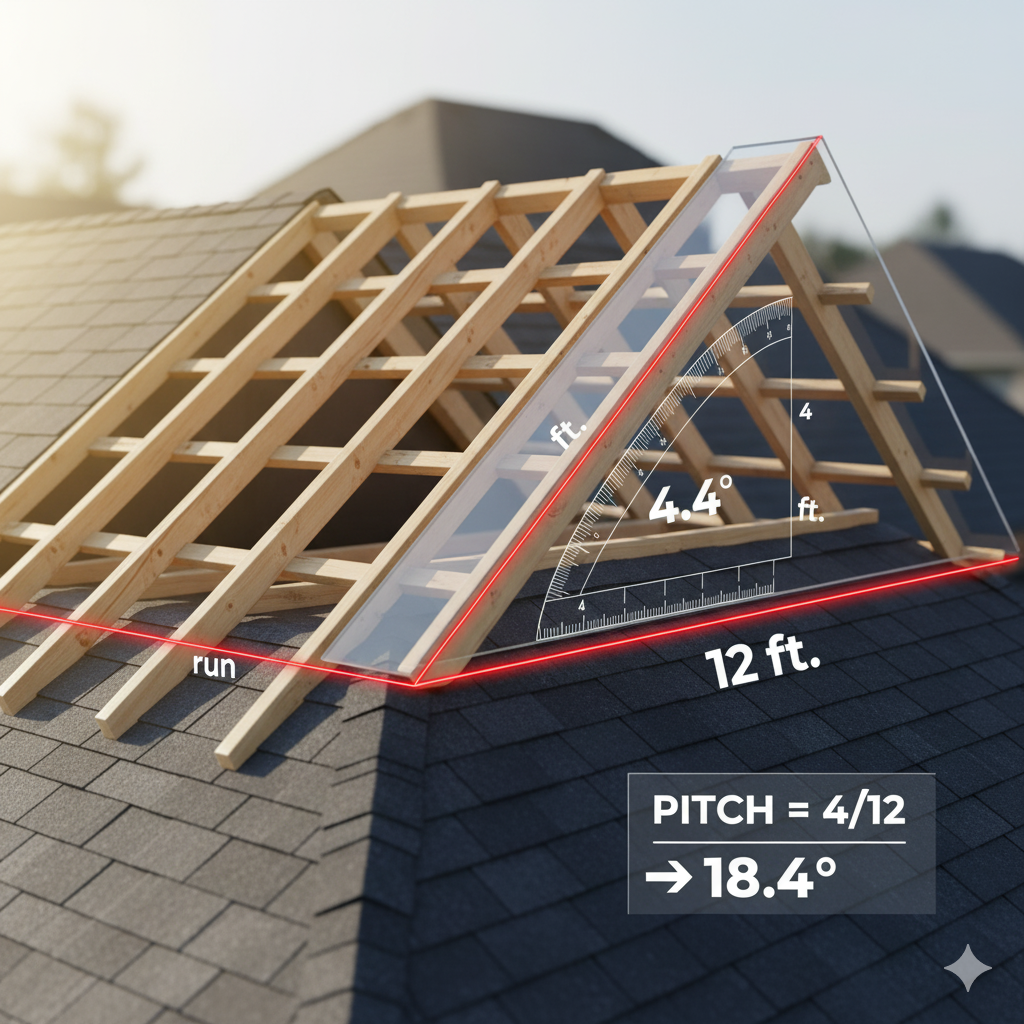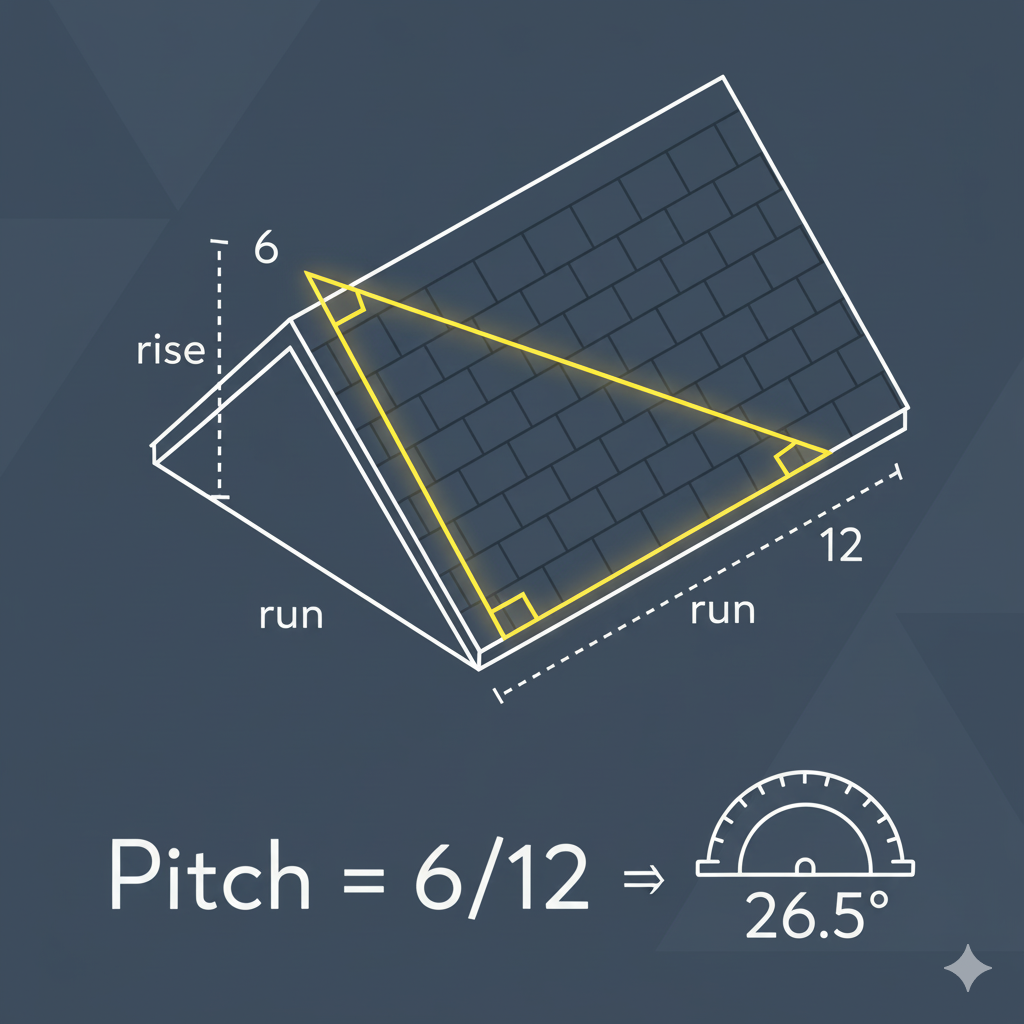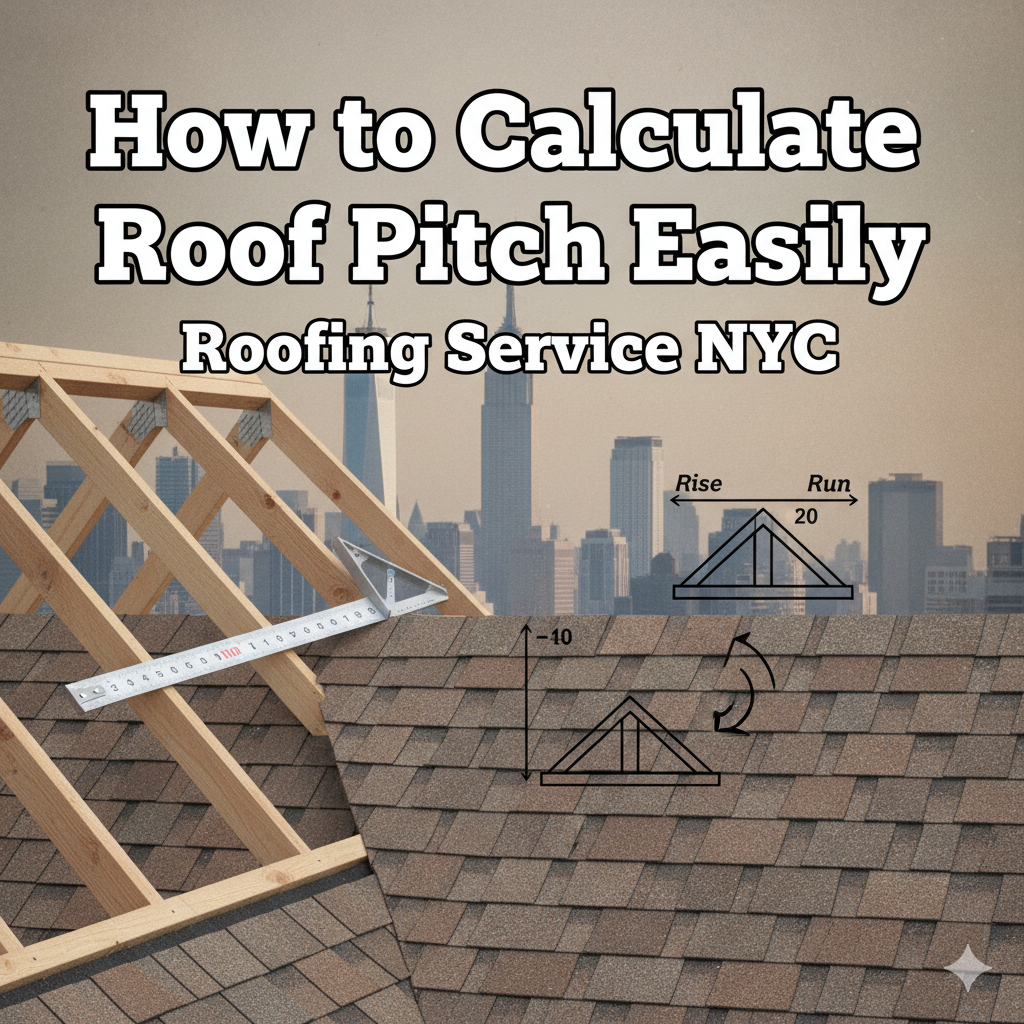When you are considering a new roof or assessing an existing roof, having a clear understanding of how to Calculate Roof Pitch can save you time, money, and other potential headaches. Roof pitching is more than just a business of appearance – roof pitching directly affects how well your roof can shed water, limits your material options, and may even have implications on your home’s energy efficiency.
If you are a DIY homeowner or you just want to get a better understanding of your contractor, this guide by Roofing Service NYC has everything you need to know about measuring, calculating, and understanding your roof pitch with professional precision.
What Is Roof Pitch?
Roof pitch is the steepness or slope of a roof. It is usually expressed as a ratio of the vertical rise to the horizontal run; for example, if a roof rises 4 inches for every 12 inches of horizontal distance it is a pitch of 4:12. The roof pitch is a helpful measurement so that you know how well your roof will shed water or snow from the roof, a very useful measurement in places that see heavy rain or snow.
Higher pitch roofs have the advantage of better drainage, but a higher pitch roof is also usually significantly steeper and may cost more to build than a lower pitch roof. A lower pitch roof will save you money; however, it may require additional waterproofing measures. Because roofing Service NYC professionals work for the public and check specs for roof pitch based upon local codes and weather, roof pitch will be an important measurement to consider when you talk to a roofing service.

Tools You Need to Calculate Roof Pitch
Before you begin the math, you’ll need a few basic tools:
A tape measure or a ruler.
- A spirit level (at least twelve inches in length).
- A framing square.
- A ladder to access the roof.
- An optional tool is a roof pitch calculator if you want a faster and easier way to convert the values you will be using in the calculations.
This will help you measure correctly and safely determine your slope of the roof.
Step-by-Step Method to Calculate Roof Pitch
Measure the Rise
Lay the level flat on the roof’s slope and make sure it extends a minimum of 12 inches from the starting point. Then, vertically measure the distance from the roof’s surface to the bottom of the level at the 12-inch side. This measurement is your rise.
Measuring the Run
The run is standard at 12 inches in the US, but if your level is less than, or more than, 12 inches, you will want to account for that when you divide later. For example, if your level is 24 inches long, you will divide the rise by two, to factor in 12 inches now for the run.
Measuring the Pitch
The pitch is the rise divided by the run. So for example, if you had a rise of 6 inches over a run of 12 inches, that would be equal to a 6/12 pitch. As a degree of a pitch, that would be approximately 26.5°.
Checking for Accuracy
To help confirm your calculations, consult an online roof pitch calculator. Verifying our calculations is what Roofing Service NYC recommends, to better confirm the manual results, especially before ordering roofing materials.
Why Roof Pitch Matters
Knowing roof pitch isn’t just important for contractors, but for a lot of practical reasons, including:
- Drainage effectiveness: Steeper roofs shed water faster, thereby minimizing the possibility of leaks,
- Material selection: Some materials, like asphalt shingles, perform better on certain pitches,
- Energy efficiency: Pitch affects ventilation and insulation in the attic,
- Aesthetic design: Roof angles and pitch are also a large component of your home’s design.
At Roofing Service NYC, we consider pitch in every roof inspection to ensure that the roof is performing and lasting as it should. (This Old House)
Common Roof Pitch Examples
| Roof Type | Common Pitch | Description |
| Flat Roof | 1/12 – 2/12 | Minimal slope for drainage |
| Low-Slope Roof | 3/12 – 4/12 | Affordable and easy to walk on |
| Medium-Slope Roof | 5/12 – 8/12 | Common for residential homes |
| Steep-Slope Roof | 9/12+ | Excellent for snow and water runoff |
| These values can guide you in choosing suitable roofing materials and estimating installation difficulty. |

Frequently Asked Questions (FAQs)
What is the formula to Calculate Roof Pitch?
The equation is straightforward: Pitch = Rise / Run. To determine how many inches your roof rises for every 12 inches of horizontal run, take a measurement.
Is there a way to determine my roof pitch without climbing up?
You can determine your pitch by utilizing a phone app or measuring from your attic. Alternatively, contact Roofing Service NYC to schedule a professional roof inspection.
What roof pitch is best in areas that experience heavy rain or snow?
If you live in an area that tends to experience heavy rain or snow, a steeper pitch would be the best route. Roof pitches of 6/12 or greater allow for the quickest runoff of water to avoid build-up of snow.
Does roof pitch affect energy efficiency?
Absolutely. Energy efficiency is dependent on pitch because of its relationship to attic ventilation, insulation limitations and solar panel placement, all are affected by roof pitch.
How does pitch relate to roofing materials?
Flat roofs often utilize rubber or PVC membranes to protect moisture intrusion, whereas steep roofs utilize shingles, metal or tiles. You may look to Roofing Service NYC to recommend roofing materials based on your pitch.
Conclusion
Understanding how to measure a roof’s pitch allows homeowners to make better decisions for roofing upkeep and design. Knowing the pitch of the roof allows you to choose the right materials, confirm proper drainage, and uphold safety standards.
If you need assistance with determining the pitch, Roofing Service NYC provides accurate roof pitch assessments, inspections, and complete roof amenities best for NY weather.




